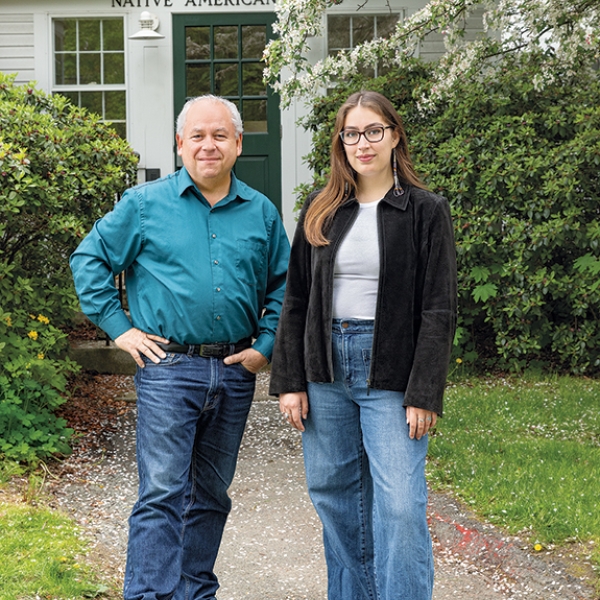Light filtered in through the big windows in the mezzanine in Rauner Special Collections Library, casting oblong sunny shapes across the cardboard boxes of Christmas cards, onionskin carbon-copies, black-and-white photographs, and deep red and sage green algae samples glued to matboard. Little did I know how important those items would become to me.
I was Dartmouth's first Historical Accountability Research Fellow, hired to spend my first-year summer researching the life of the College's first tenured female professor, Dr. Hannah Croasdale, a biologist. She began at Dartmouth in 1935 as a research technician and retired as a full professor in 1971.
As I embarked on my research, what struck me most was that pioneers rarely act the way our modern lenses would expect them to. Hannah was earning 60 percent of her male peers' salaries, but never seemed overly frustrated by that fact. She just supplemented her income by illustrating textbooks. She never expected better treatment from an employer, and she was unwilling to let that stop her from pursuing her passion for the natural world. That was what I found so inspiring: the razor focus on what she considered most important.
I wasn't expecting the research to live beyond some blog posts for the library—I certainly never imagined getting it published—until Jay Satterfield, Head of Special Collections, told me one day, "This story could be a graphic novel." I laughed when Jay suggested it. I was nervous about not doing this story justice. After all, who was I, still a student of writing, to tell someone else's story? But being taken seriously as a writer, researcher, and historian was a pattern for me at Dartmouth. And I had no shortage of encouragement along that path. My thesis advisor, Professor Thomas O'Malley, told me to write myself a note and keep it where I could see it. For the rest of the year, the edge of my laptop screen had a sticky note with Professor O'Malley's words: "Only you can tell this story." My senior year, I did indeed turn Hannah's story into a novel.
Tell Them to Be Quiet and Wait was published a year and a half after I graduated. Based loosely on all that I learned about Hannah's life, it's historical fiction that compares the life of a professor at a college in New Hampshire with the life of a modern-day student in the same, now-coed, biology department. While the things I was taught about story construction and character development in my Dartmouth creative writing classes—as well as about archival research in my time at Rauner—quite literally made the book possible, I wouldn't have finished it or put it up for publication were it not for those conversations with Jay and Professor O'Malley.
Those two moments of encouragement stood out amid all the hundreds of others that blurred together. It was beyond mere support. It was speaking to me as a fellow writer and a visiting researcher, not as a student or a summer intern. It made me feel like anything was possible, whatever I decided to pursue next. And now, as I'm just beginning my career, I think of those sunny days in Rauner and know that I'm poised for whatever is ahead because of the community of people who have always looked at the work I'm doing and said, "Keep going."
In "Onward and Upward," 3D presents essays by and about Dartmouth alumni, a close-knit network (currently 79,500 people and counting) with no shortage of stories of lessons learned—and life-long bonds forged—beginning with their time in Hanover. Just ask them!
Photograph by Timothy Archibald




